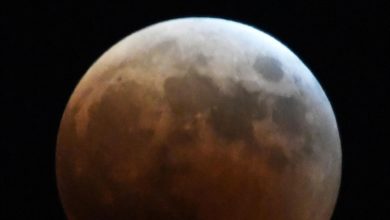Super-Heated Products of Ancient Supercontinent Formation ‘Cooked’ Bones of Prehistoric Creatures
Volcanic lava


 Researchers studying fossils made a discovery by examining crystals of apatite that formed within the ancient bones they were working with.The strange-looking deformed fossils of creatures that were discovered at the Jarrow Assemblage site in Ireland during the second half of the 19th century had apparently been “cooked” by the heat released during the tectonic processes that reshaped the face of the Earth millions of years ago.The fossils in question, which belong to ancient “amphibian-like creatures” from over 300 million years ago, have their bone morphology distorted by what was originally believed to be acid, a press release issued by Trinity College Dublin said.However, a study conducted by researchers from Trinity College Dublin, University College Dublin, National University of Ireland, Galway, the University of Birmingham, and the Gemological Institute of America now points at a different cause of these changes.Dr. Gary O’Sullivan from University College Dublin, co-author of the new research, explained that his team discovered apatite in the bones they were studying, and that further analysis revealed this mineral “was formed by heated fluids within the Earth.”“We have also been able to radiometrically date the apatite which shows it formed during a time when all the continents on Earth were coming together and colliding to form the supercontinent Pangaea,” said Dr. Aodhan O Gogain of Trinity College Dublin, lead author of the study. “As these continents collided, they formed mountain belts with super-heated subterranean fluids flowing off them. It is these super-heated fluids, which flowed throughout Ireland that cooked and melted the bones of these fossils causing the alteration we see today.”The research was published earlier this week in the journal Paleontology.
Researchers studying fossils made a discovery by examining crystals of apatite that formed within the ancient bones they were working with.The strange-looking deformed fossils of creatures that were discovered at the Jarrow Assemblage site in Ireland during the second half of the 19th century had apparently been “cooked” by the heat released during the tectonic processes that reshaped the face of the Earth millions of years ago.The fossils in question, which belong to ancient “amphibian-like creatures” from over 300 million years ago, have their bone morphology distorted by what was originally believed to be acid, a press release issued by Trinity College Dublin said.However, a study conducted by researchers from Trinity College Dublin, University College Dublin, National University of Ireland, Galway, the University of Birmingham, and the Gemological Institute of America now points at a different cause of these changes.Dr. Gary O’Sullivan from University College Dublin, co-author of the new research, explained that his team discovered apatite in the bones they were studying, and that further analysis revealed this mineral “was formed by heated fluids within the Earth.”“We have also been able to radiometrically date the apatite which shows it formed during a time when all the continents on Earth were coming together and colliding to form the supercontinent Pangaea,” said Dr. Aodhan O Gogain of Trinity College Dublin, lead author of the study. “As these continents collided, they formed mountain belts with super-heated subterranean fluids flowing off them. It is these super-heated fluids, which flowed throughout Ireland that cooked and melted the bones of these fossils causing the alteration we see today.”The research was published earlier this week in the journal Paleontology.



